Share this article
Wild Cam: Svalbard Reindeer rebound after near extirpation
At 35 degrees Fahrenheit, it was a relatively warm day in an Arctic archipelago far north of the Norwegian mainland. But drift ice still floated in the balmy summer water when the small boat Mathilde Le Moullec sailed nearly went down.
The postdoctoral researcher at Norwegian University of Science and Technology and her colleagues were on a mission to count the number of reindeer on the Svalbard archipelago when their boat struck a rock just offshore.
“We nearly called ‘Mayday! Mayday! Mayday!’ at some point,” Le Moullec said.
Their work, published recently in the Journal of Wildlife Management, found that the population of reindeer (Rangifer tarandus) was on the path to recovery after near extirpation in the early 1900s.
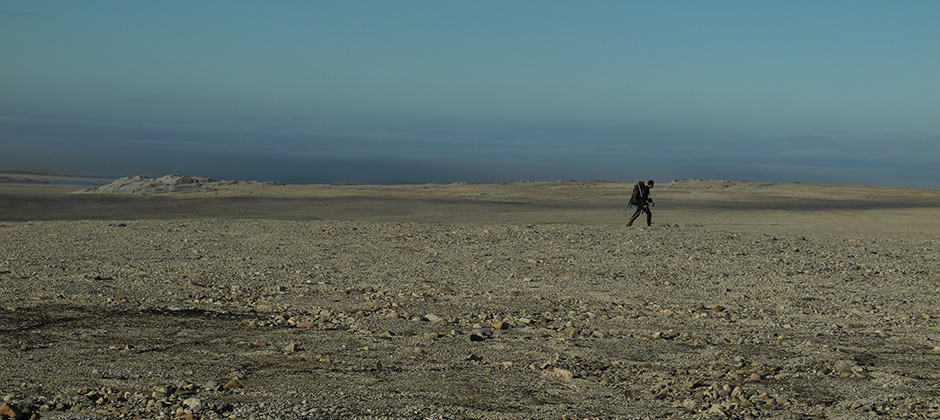
©Mathilde Le Moullec
To conduct their research, Le Moullec, and her colleagues Morgan Bender, her colleague Brage Hansen, pictured above, and others walked long transects across the often barren landscape of the archipelago. During these hikes — which added up to close to 1,250 miles — they counted the reindeer they saw.
“You end up in these places no one really has a reason to go to,” she said.
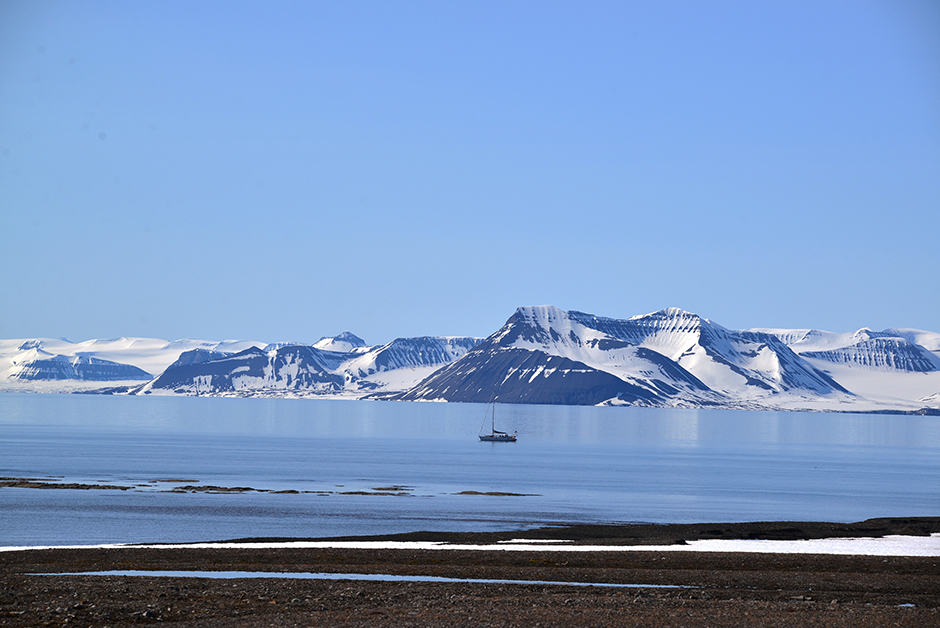
©Mathilde Le Moullec
Many of these islands were difficult to reach without traveling by sailboat. On one of their trips to a remote island, the boat struck a rock under the water and nearly put an early end to their expedition that season. But the researchers had dry suits. Working under the chilly Arctic water, they tied rope and worked with a pulley system to free the rudder and get the boat free.
“It worked, and the conditions were good,” Le Moullec said. “That was kind of a critical point of the study.”
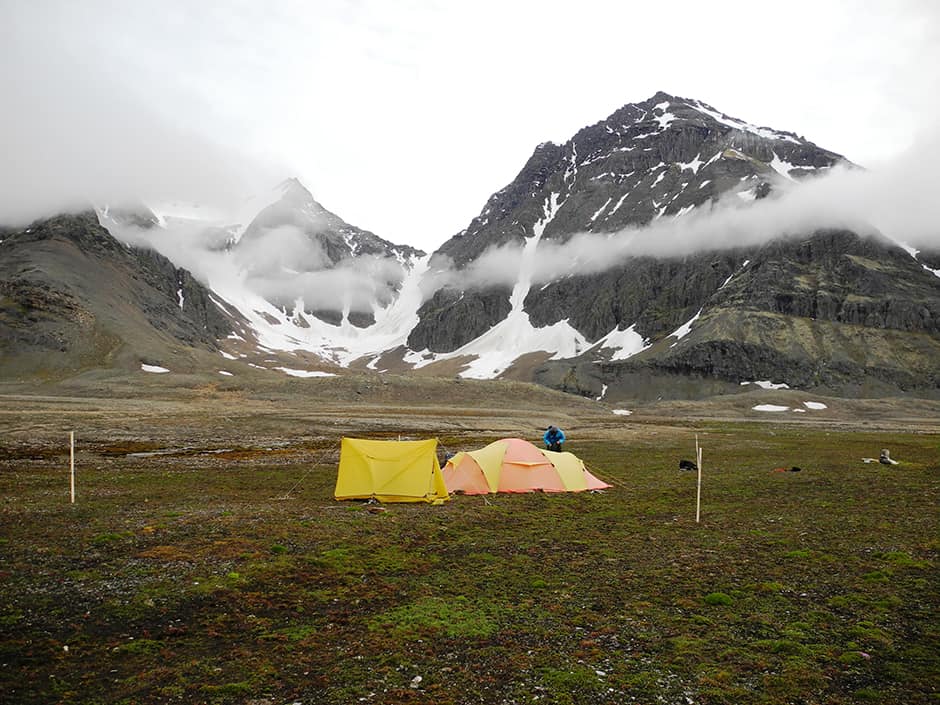
©Mathilde Le Moullec
Weather didn’t always cooperate. On rainy days, the team walked transects without nearby shelter other than the tents they brought.
“Sometimes it’s gray and miserable, and you find a [dead polar] bear that’s hidden in a hole,” Le Moullec said. “It’s kind of a special moment where you hold your gun a little bit closer.”
But while they saw polar bears (Ursos maritimus) from the boat, these environments rarely overlap with the reindeer ecosystems.
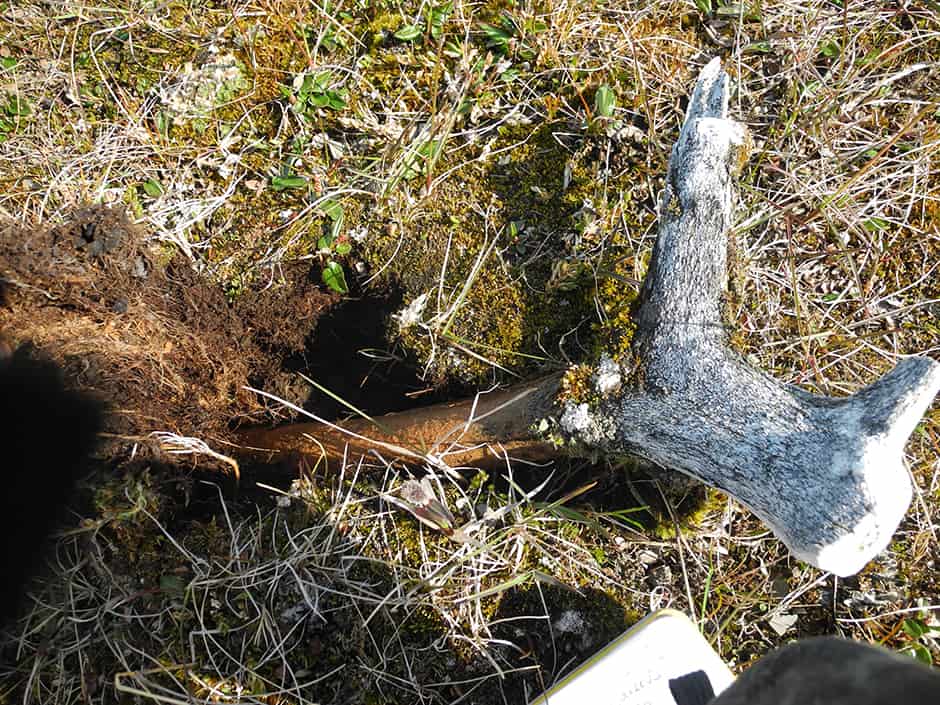
©Mathilde Le Moullec
Along the way they uncovered ancient reindeer bones that later testing determined dated back as far as 4,000 years — the one pictured is only 3,000 years old. Their analysis revealed that while it’s unclear when reindeer first came to Svalbard, they are more closely related to Scandinavian animals than caribou in North America.
Humans first discovered the island about 400 years ago, but whaling crews began heavily harvesting the reindeer beginning in the 16th century, and later settlement of year-round mining communities caused extirpation of most of the coastal populations leaving only about 40% of the original reindeer population on Svalbard overall. The animals were eventually protected from further harvesting in 1925, but only an estimated 1,000 animals remained in a few populations in the interior, according to old reports by the Norwegian Polar Institute analyzed by the researchers.
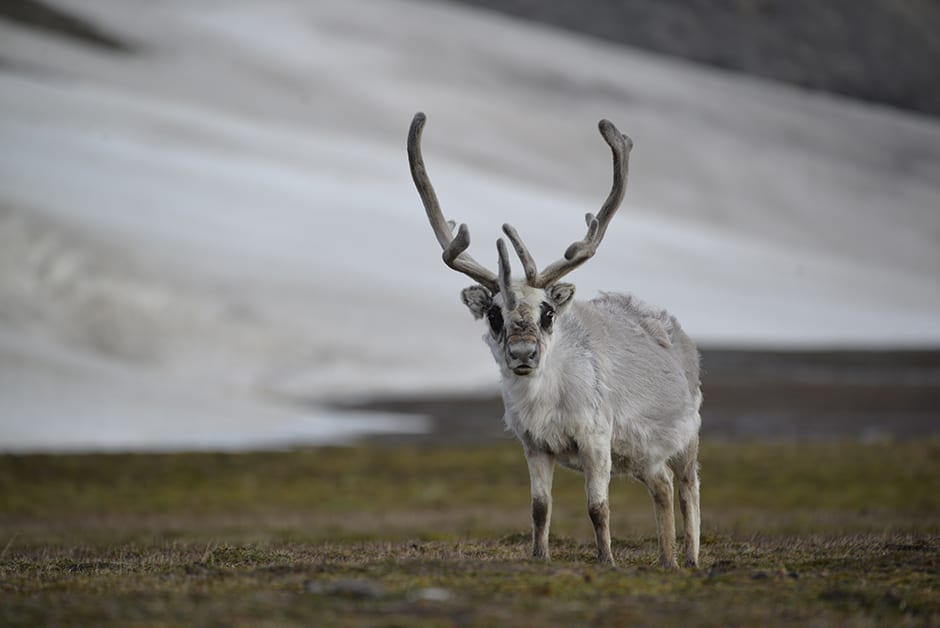
©Marie-Diane Vanquathem
The Norwegian government’s most recent estimates put the population at about 11,000 animals in 2009. But Le Moullec and her colleagues’ expeditions resulted in a more accurate, and far higher number: 22,000 reindeer.
She said that it’s unlikely the numbers have doubled in a decade, but rather previous surveys had never been conducted using such systematic methodology and likely underestimated the number of animals.
Nonetheless, populations still seem to be growing, she said.
“Even if they doubled, they are still recovering in large part of Svalbard,” she said, adding that they are mostly present again in all areas they were known to be present before humans began to harvest them.
“The populations that were locally extinct still have lower densities than in the regions that they were not extinct,” she said, adding that dispersal happens slowly between different populations. “So it’s a hundred years later, but they are still recovering from hunting. This is mainly because it’s such a fragmented landscape that they don’t move much.”
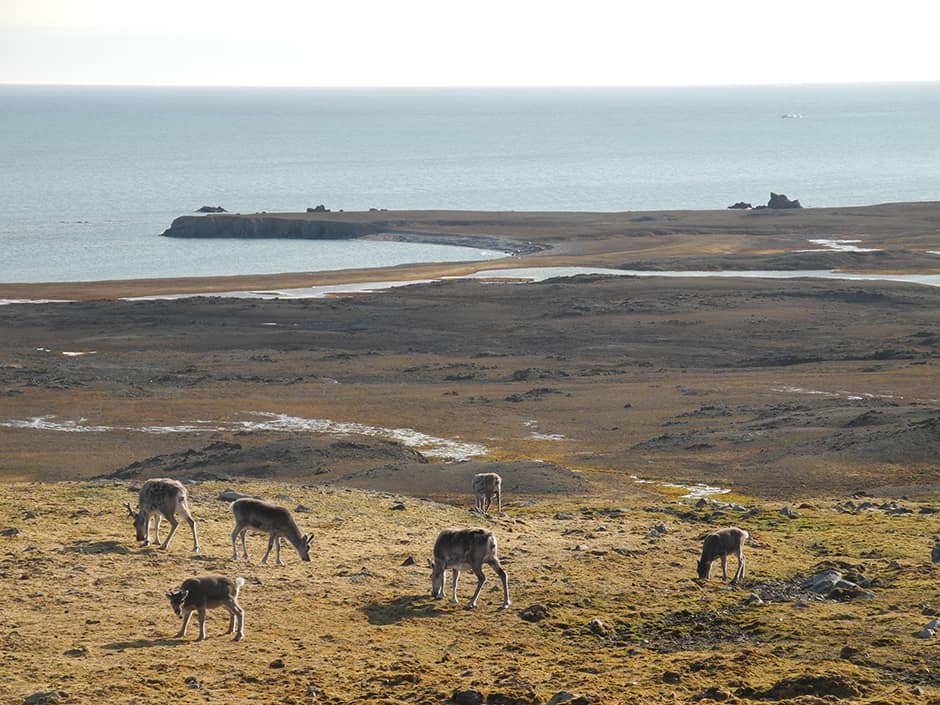
©Mathilde Le Moullec
Climate change may impact their continued recovery, though. In interior parts of the islands, Le Moullec said warmer temperatures have resulted in higher production of the vascular plants they feed on.
During the winter, reindeer need to break through the snow to find these plants. While in the interior, higher plant production means more food, in coastal areas where there are more frequent rain-on-snow events, icy ground cover makes it more difficult for reindeer to break through and access vegetation.
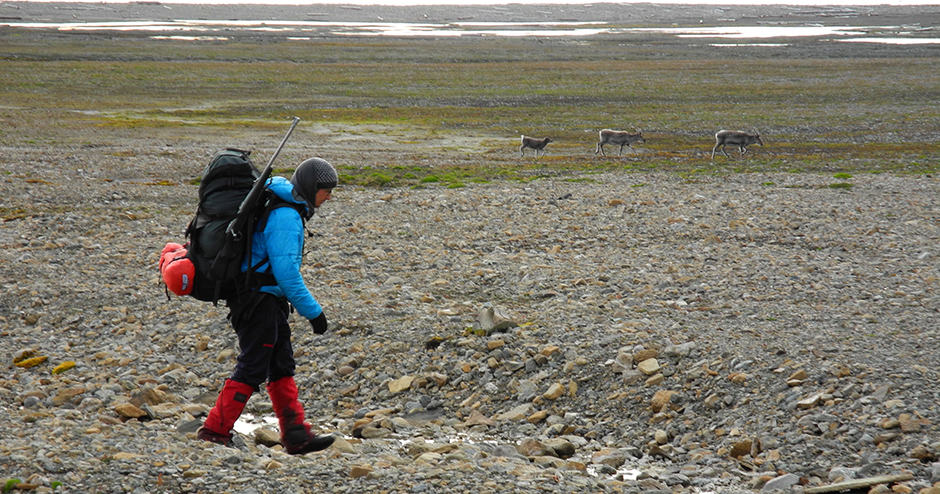
©Mathilde Moullec
Future laboratory research will help the scientists learn more about the genetic make-up and health of the Svalbard populations.
But for now, Le Moullec feels positive about the recovery of these “quite fascinating animals” and their prospects for future survival. As she and others like Martin Kristiansen, pictured above, hiked transects with their rifles on their backs, she was amazed to walk more than a mile without seeing a single tiny polar desert plant (the area in the photo is less barren). But, still saw a reindeer and calf every four miles or so.
“They are just warriors in how they can live with so little,” she said.
This photo essay is part of an occasional series from The Wildlife Society featuring photos and video images of wildlife taken with camera traps and other equipment. Check out other entries in the series here. If you’re working on an interesting camera trap research project or one that has a series of good photos you’d like to share, email Joshua at jlearn@wildlife.org.
Header Image: Mathilde Le Moullec gets eye-to-eye with a reindeer in Svalbard, Norway. ©Morgan Bender








